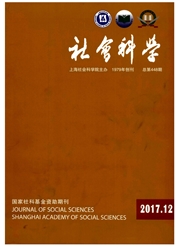

 中文摘要:
中文摘要:
构建产业集聚变动指数,剖析污染密集型产业区际转移粘性特征,并基于新经济地理、经济政策视角解析污染密集型产业转移粘性的成因。研究结果显示:纺织业、石油加工/炼焦及核燃料加工业、化学原料及化学制品制造业、黑色金属冶炼及压延加工业等污染密集型产业存在转移滞缓或转移粘性特征;新经济地理因素对污染密集型产业转移粘性的影响机制主要表现为产业集聚的“极化效应”和产业集群的“锁定效应”,经济政策因素对污染密集型产业转移粘性的影响机制主要表现为经济开放政策的“市场接近效应”和环境规制政策的“倒逼效应”;产业集聚指数、交通运输条件、对外开放度均是导致污染密集型产业转移滞缓的原因,环境规制政策在初期延缓了污染密集型产业转移,但在达到一定水平后也会迫使污染密集型产业跨区域转移。
 英文摘要:
英文摘要:
This paper analyzed the characteristics of inter-regional transferring viscous of pollution-intensive industries with an index of industrial concentration fluctuation, and studied the cause oftransferring viscous based on the new economic geography and economic policy. The results show: firstly,certain pollution-intensive industries exist transfer sluggish or transfer viscous, such as textile industry,oil processing/coking and nuclear fuel processing industry, chemical raw materials and chemical productsmanufacturing, black metal smelting and rolling processing industry. Secondly, the new economicgeography and economic policy factors affect pollution-intensive industries transferring viscous through"polarization effect" of industrial agglomeration, " lock-in effect" of industrial clusters, " marketproximity effect" of economic opening policy and " reversed transmission effect" of environmentalregulation policy. Thirdly, industrial concentration index, transportation conditions, foreign openness isthe cause of pollution-intensive industries' transfer sluggish. Besides, Environmental regulation policydelayed the pollution intensive industries transfer in the early, but will also force pollution intensiveindustries transfer across regions after a certain level.
 同期刊论文项目
同期刊论文项目
 同项目期刊论文
同项目期刊论文
 期刊信息
期刊信息
